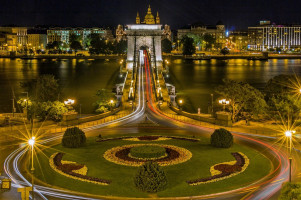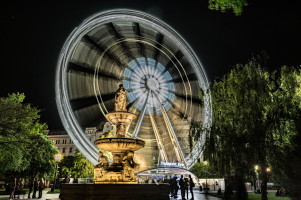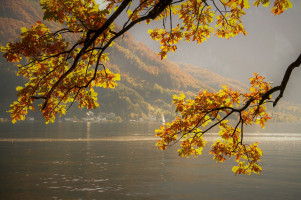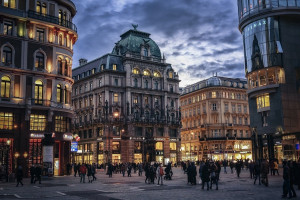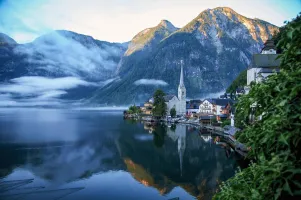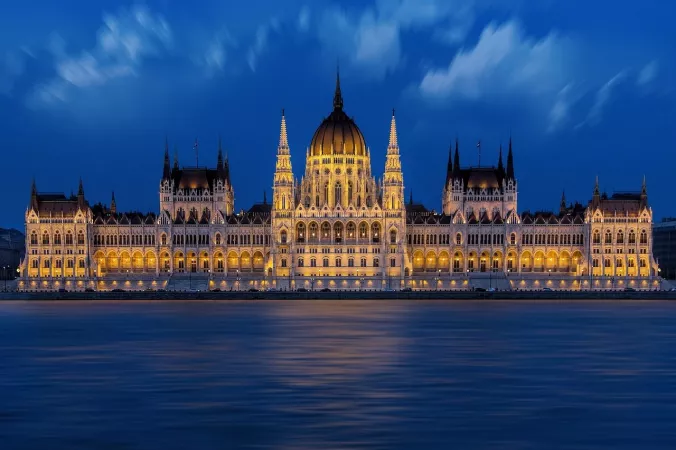
Budapest
Duration
3 to 5 Days
3 to 5 Days
Best time to visit
Apr-May, Sep-Oct
Apr-May, Sep-Oct
Theme
Heritage, Waterfront
Heritage, Waterfront
Budapest Travel Guide
Budapest, the capital of Hungary, is a vibrant city known for its rich history, stunning architecture, and thermal baths. Situated on the banks of the Danube River, Budapest is a city of two halves - Buda and Pest, each offering a unique charm. The city is famous for its UNESCO World Heritage sites, including Buda Castle, the Hungarian Parliament Building, and the Chain Bridge. Budapest is also renowned for its lively cultural scene, delicious cuisine, and bustling markets.Top Attractions in Budapest
1. Buda Castle 2. Hungarian Parliament Building 3. Fisherman's Bastion 4. Széchenyi Thermal Bath 5. St. Stephen's BasilicaBudapest is Famous for
Its stunning architecture and relaxing thermal baths.Top Attractions in Budapest
- Buda Castle - Hungarian Parliament Building - Fisherman's Bastion - Széchenyi Thermal Bath - St. Stephen's BasilicaWhat's Great about Travelling to Budapest?
- Rich history and culture - Stunning architecture - Thermal baths experience - Vibrant nightlife - Affordable travel destinationWhat's Not So Great about Travelling to Budapest?
- Crowded tourist spots - Language barrier for non-Hungarian speakers - Pickpocketing in tourist areasTravel Tips for Budapest
- Carry some cash as not all places accept cards - Use public transport or taxis for getting around - Be cautious of pickpockets in crowded areas - Try local Hungarian dishes at traditional restaurantsImportant Budapest trip information
- Ideal Duration: Spend at least 3-4 days to explore Budapest.
- Best Time to Visit: The best time to visit Budapest is during the spring (April-May) or fall (September-October) when the weather is pleasant.
- Nearby Airports and Railway Stations: Budapest Ferenc Liszt International Airport is the main airport, and Budapest Keleti Railway Station is the primary railway station.
Top 35 Places to visit in Budapest
Per Person
74,546
*EXCLUDING APPLICABLE TAXES 5.0 Ratings
( 396 Reviews )
( 396 Reviews )
Per Person
71,766
*EXCLUDING APPLICABLE TAXES 5.0 Ratings
( 396 Reviews )
( 396 Reviews )
Per Person
31,226
*EXCLUDING APPLICABLE TAXES 5.0 Ratings
( 396 Reviews )
( 396 Reviews )
Per Person
39,872
*EXCLUDING APPLICABLE TAXES 5.0 Ratings
( 396 Reviews )
( 396 Reviews )
Per Person
1,32,605
*EXCLUDING APPLICABLE TAXES 5.0 Ratings
( 396 Reviews )
( 396 Reviews )
Per Person
1,15,000
*EXCLUDING APPLICABLE TAXES 5.0 Ratings
( 28 Reviews )
( 28 Reviews )
FAQ's on Budapest
Q1: What is the best time to visit Budapest?
The best time to visit Budapest is during the spring (March to May) and autumn (September to November) when the weather is mild, and the city is less crowded. Summer (June to August) is also popular for festivals and events, but it can be hot and crowded. Winter (December to February) is chilly but offers a magical atmosphere with Christmas markets. Consider visiting during the shoulder seasons for a more enjoyable experience.
Q2: Do I need a visa to travel to Budapest?
Most tourists from the US, Canada, Australia, and the EU do not need a visa to visit Budapest for up to 90 days. However, it's essential to check the specific visa requirements based on your nationality before traveling. Make sure your passport is valid for at least six months beyond your intended stay.
Q3: What are the must-visit attractions in Budapest?
is known for iconic landmarks such as the Buda Castle, Fisherman's Bastion, Parliament Building, and Chain Bridge. Don't miss a relaxing soak in the thermal baths like Széchenyi or Gellért. Explore the historic district of Castle Hill and enjoy a cruise along the Danube River for stunning views of the city.
Q4: Is Budapest a safe place to travel?
Budapest is generally a safe city for tourists. However, like any other destination, it's essential to stay cautious of pickpockets, especially in crowded tourist areas. Avoid poorly lit areas at night and be mindful of your belongings. The city has a low crime rate, but it's always wise to take standard safety precautions.
Q5: What is the local currency in Budapest and can I use credit cards?
The local currency in Budapest is the Hungarian Forint (HUF). While many places accept credit cards, it's advisable to carry some cash for small purchases and at local markets. ATMs are widely available throughout the city, making it convenient to withdraw money when needed.
Q6: What is the local cuisine like in Budapest?
offers a delicious blend of traditional Hungarian dishes like goulash, lángos (fried dough), and chimney cake. Explore the vibrant food markets for local produce, meats, and cheeses. Don't forget to try Hungarian wines and pálinka (fruit brandy) for a true taste of the country.
Q7: What transportation options are available in Budapest?
Budapest has an efficient public transportation system, including buses, trams, metro, and boats along the Danube. Purchase a Budapest Card for unlimited travel on public transport and discounts to attractions. Taxis and ride-sharing services are also available for convenient travel around the city.
Q8: Are there any cultural norms or etiquette I should be aware of when visiting Budapest?
When visiting , it's important to greet people with a handshake and maintain eye contact. Respect local customs such as removing shoes before entering someone's home. Tipping is customary in restaurants and for services, typically around 10% of the bill. Be mindful of dress codes when visiting churches or upscale establishments.
Q9: I am a travel agent. How can I buy travel leads of Budapest?
Register yourself as a travel agent at agents.tripclap.com and then you can buy travel leads to Budapest once your account is approved. For more details contact our support team at +91-8069186564 or support@tripclap.com
